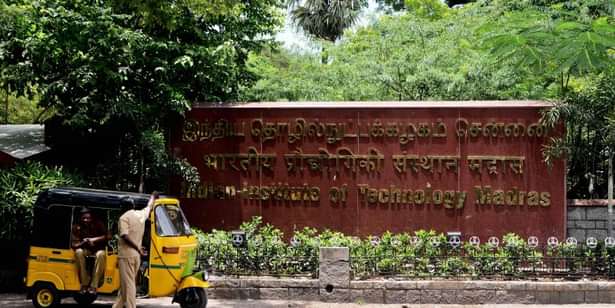
The air pollution levels in the Indian cities is at an all-time high. The day is not far when an air purifier would become more of a necessity. But help is closer than you thought. A team of scientists at the IIT Madras have developed an air purifier that would be easy on the pocket.
The sensor based air purifier can very easily reduce the pollutant load that includes the microbes in the air. Although quite a few air purifiers are available in the market but their price is above Rs 15,000 for a small room. The air purifier developed at IIT Madras is made up of low cost materials such as activated charcoal and ultra-violet light and promises to be quite affordable.
IIT-M incubation cell launched a faculty startup Air OK Technologies under its wings. This startup would soon be commercializing the purifier. The device is designed in such a manner that it can be easily fit into any place requiring sterilized environment such as hospitals, buildings facing roads, basement parking lots and dusty localities. The device is going to be extremely helpful to the people suffering from asthma and other respiratory diseases.
The purifier works quite akin to a water purifier and is based on a simple three layer technology. It consists of a stainless steel cylindrical body at the bottom of which a fan is fitted that sucks in the air after sensor detects pollutants in the air. A muslin fabric is present in the purifier that acts like a pre-filter and removes the large dust particles present in the air.
The activated charcoal produced by burning wood forms the second layer of filter. The pollutants including chemicals are absorbed by the charcoal that is contained in a bag. According to the researchers the substances in the air get stuck to the pores of the charcoal. According to a research team member,” The high surface area of the charcoal gives it a lot of bonding places. So, the better the pores the better the adsorption capacity.”
Now with the reduced level of pollutants the air is made to pass through the third filter that is the ultraviolet light fixed above the activated charcoal layer. This filter treats the air for bacteria and viruses. The entire apparatus consumes just 50 watts.
In the opinion of Mr. S M Shiva Nagendra, the associate professor at the Environmental and Water Resources Engineering it is very much important to monitor the air present indoors. He said,” We spend lot of time indoors. While pollutants outdoors move around, in rooms they get accumulated and keep circulating.”
Several studies done on the subject have revealed that 45% of urban air pollution is due to vehicular emissions. They also contribute in a big way to the indoor air pollutants such as dust, smoke, aerosols and toxic chemical compounds like carbon monoxide. A combination of vehicular pollution and the emission from products like paints, construction rubble, and burning fuel along with allergens like pollen, molds and dander have a detrimental effect on the indoor air quality.
The purifier was made to undergo initial round of experiments in a controlled environment. The result was a significant reduction in the pollutant present in the air. For instance, burning of kerosene for less than 10 minutes in addition to the other airborne molecules in a room measured up to 300 microgram per metric cube. When the purifier was used in the same environment it showed 20 to 30 microgram per metric cube in the filtered air. Many such experiments are being carried on the purifier to validate its effectiveness.
At present the existing purifier works on quite varied mechanisms like filter cartridges that are made from fibre glass, foam, cotton fixed to heating or cooling systems, activated charcoal and UV radiation used separately. The work is still on to include additional features to the device that can distribute the filtered air in 360 degrees and also sensors that can automate the entire purifying process and thus save energy.


 Follow us
Follow us













